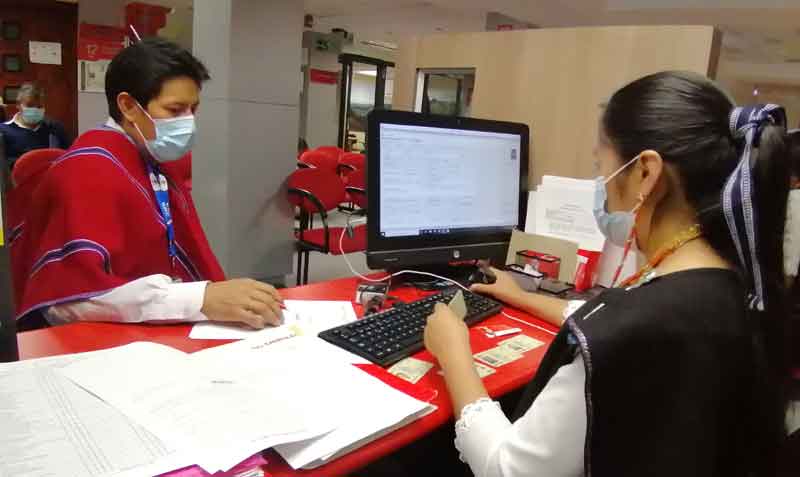He arrived early at his office located on the second floor of the heritage building of the Municipality, in the center of Ambato.
He wears an outfit that is made up of a black anaco and a white blouse with embroidery handmade and adjusted to your waist with two purple chumbis or sashes.
The costume it is complemented with a cloth and coral necklaces. The young woman belongs to the community from Pilahuín, of the canton Ambato. Two years ago, 29-year-old Sandra was chosen rural councilor of that city. He says it is challenging to take on this role and he fulfills it with pride.
She is convinced that as authority it must be Him example for your children, youth and children. For that reason it retains the traditional costume, but more modern, with small changes, like the ancestral language (Kichwa).
Sandra also shares the time as an executive of the first Cooperativa Indígena de Ahorro y Crédito SAC, in the capital of Tungurahua.
In that financial entity work a group of executives who come from the Indigenous villages of the locality.
Sandra is part of the group of indigenous youth who work in companies, savings and credit cooperatives or in public institutions in Ambato (Tungurahua). This also happens in Otavalo (Imbabura).
Women wear blouses with necklines, long sleeves with handmade embroidery and made with lace fabrics that are the latest trend on the fashion. The men keep the embroidered shirt and white pants, the black, red or navy blue poncho, according to the town to which they belong.
Jenny Ainaguano, designer and owner of a boutique in the city of Ambato, says that the adaptations to the suits autochthonous They impacted the young women of the Salasaka, Chibuleo, Tomabela and Quisapincha peoples.
He assures that today, indigenous girls dress in more modern models, but they did not lose the essence of the costumes worn by the taitas and mamas in the communities.
The Ambateño sociologist and National President of the House of Culture, Fernando Cerón, explains that the historical process that started with him indigenous uprising 1990 was fundamental, because from there the indigenous began to be vindicated as an important element within the identity. Then came the appearance of a politic party and access to important positions in the ministries.
He assures that then the business theme, with the appearance of the savings cooperatives and credit. There the children of the so-called first uprising arose, who are currently 30 years old. “All this process allowed indigenous peoples and nationalities to have an important presence of young people who proudly identify with their culture, clothing and language.”
Gloria Pandi, from the Pilahuín parish, works as an executive in the Chibuleo Savings Cooperative. He wears his typical outfits in his office, where he is a loan officer.
Account that the youths from his common little by little they dress in the suits typical, like a identity form.
The manager of the Chibuleo Savings and Credit Cooperative, Rodrigo Llambo, also wears his ancestral costume. He says that as chief executive he must give example. “330 people work in our cooperative throughout the country. 70% come from the towns Otavalo, Salasaka, Chibuleo, Santa Rosa ”.
In Otavalo, the use of the clothing is a trend what’s wrong with it good reception in savings and credit cooperatives established in the locality. There are entities that have recruited young indigenous professionals in the financial sphere, who in their daily work wear the elegant wardrobe.
One of them is the Cooperativa Pilahuin Tio, which has its headquarters in this city for 15 years. The general manager, Esteban Mazabanda, explains that in addition to estimating the talent that these young people have for the finance, aim to strengthen their culture and language.
In the case of the indigenous employees of this financial institution, they wear the traditional suit: anaco, embroidered blouse, fachalina, walca, handcuffs and her hair well gathered by a ribbon.
Men, on the other hand, wear a uniform made up of white trousers and shirt, black shoes and belt, a jacket and a cloth hat. The latter, the pants and the shirt are characteristic of the clothing of the Otavaleño man.
For Mazabanda, this is part of the entity’s distinctive and has had good acceptance on the community. Although he considers that the cultural field is broad and as indigenous they must evolve and adapt to the global world.
–

